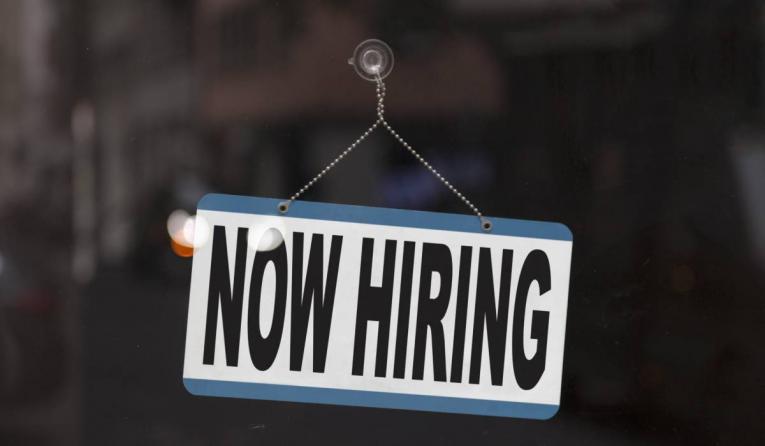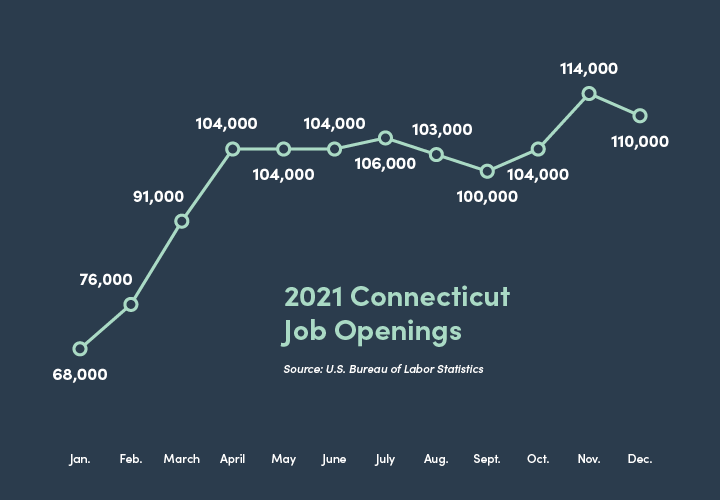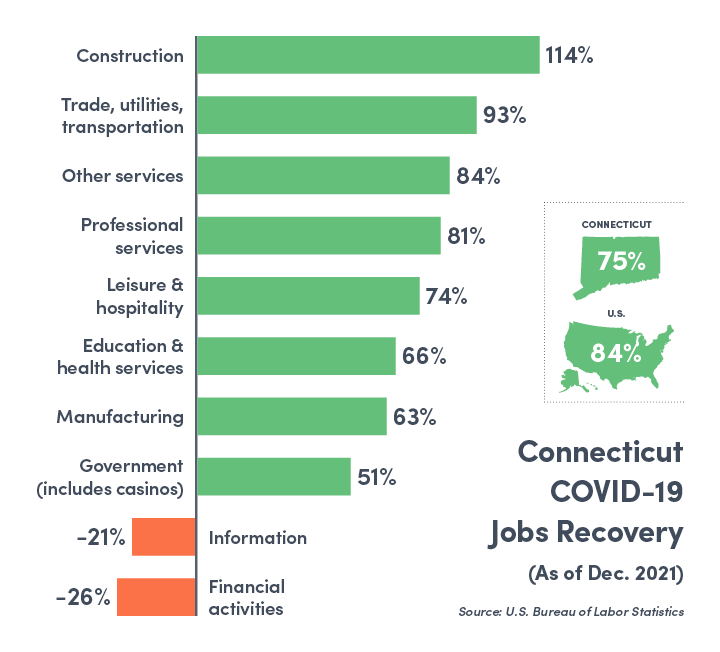Job Openings Surge, Labor Force Shrinks

The number of Connecticut job openings surged to 110,000 in 2021—a 64% increase over 2020—while the labor force declined for a second consecutive year.
The state’s labor force—the number of employed workers plus those actively looking for work—fell by 17,000 people last year and is down 92,000 (5%) since February 2020.
Connecticut’s unemployment rate is 5.8%, tied for sixth highest in the country, further amplifying the state’s growing labor shortage.
“We have the jobs—110,000 of them,” said CBIA president and CEO Chris DiPentima. “What we don’t have is enough talent to fill those open positions.
“Even if every unemployed Connecticut person found a job today, we would still have 5,800 unfilled job openings.”
Connecticut is responsible for 40% of the region’s labor force losses and over 10% of the U.S. decline.
A Feb. 17 U.S. Bureau of Labor Statistics report shows job openings grew significantly across New England and the country last year.
However, Connecticut’s labor force decline since February 2020 is the largest of the New England states in actual terms and the second highest in percentage terms behind Vermont (-7%).
Rhode Island, Maine, and Vermont each saw year-over-year gains in 2021, while the rest of the region experienced continuing declines.
Jobs Recovery
Connecticut is responsible for 40% of the region’s labor force losses since February 2020 and over 10% of the U.S. decline.
“Our labor force did not decline during the last recession, despite major job losses,” DiPentima said. “In fact, we saw the opposite—Connecticut’s labor force actually grew in 2008, 2009, and 2010.
“What we’re experiencing now is quite troubling from that perspective and compounded by our high unemployment rate and anemic 2021 job growth.”
Connecticut has recovered 75% of the historic 292,400 jobs lost in March and April of 2020 to pandemic shutdowns and restrictions, second slowest in the region and well behind the U.S. average of 84%.
DiPentima noted that a 2021 CBIA survey found that 80% of employers struggled to find and retain employees, with more than a third describing the labor shortage as the greatest threat to growth.
Highly skilled, high-paying sectors such as financial activities, information, and manufacturing are among the slowest sectors in the state to recover.
Labor Shortage Factors
DiPentima said a number of factors are driving the labor shortage, including ongoing COVID-19 concerns, childcare challenges, insufficient and/or mismatched workforce development efforts, supply chain disruptions, shifting work and career expectations, the state’s high cost of living, and its aging population.
“Some of those factors are structural and predate the pandemic, while COVID accelerated the impact of others, particularly the state’s aging workforce and attitudes about work,” he said.
“Fortunately, there’s been much greater emphasis and collaboration between the public and private sectors targeting workforce development and I am encouraged by our progress, although we still have much more to address.”
Connecticut’s quits rate is tied for third lowest in the country.
What economists call the Great Resignation continues to impact the employment picture, with 4.3 million Americans (2.9%) resigning their jobs in December 2021.
While Connecticut saw a 34% jump in voluntary resignations in December 2021 compared with December 2020, that was the smallest increase in New England, with the state’s 2.4% quits rate now tied for third lowest among all states.
Layoffs and terminations fell 75% in December 2021 compared with the previous December, the largest decline in the region, while the overall rate is the second lowest in the country.
Policy Priorities
“Workers’ compensation data shows that our workplaces are among the safest in the country,” DiPentima said.
“And wages and salaries increased almost 10% year-over-year based on third quarter 2021 data.
“Employers are making investments in hiring, training, and retention their top priorities this year and we need policymakers to do the same thing so we can resolve this crisis, get people working, and grow our economy.
“Unfortunately, it seems not all lawmakers understand the full magnitude of this issue.”
CBIA’s Chris DiPentima
“Unfortunately, it seems that not all lawmakers understand the full magnitude of this issue, based on what some members of the legislature are pushing this session.
“Lawmakers should be making it easier—not more difficult—to create jobs and keep companies here.
“It’s one thing to talk about helping businesses and our economy and it’s disheartening when actions don’t mirror the rhetoric.”
RELATED
EXPLORE BY CATEGORY
Stay Connected with CBIA News Digests
The latest news and information delivered directly to your inbox.




